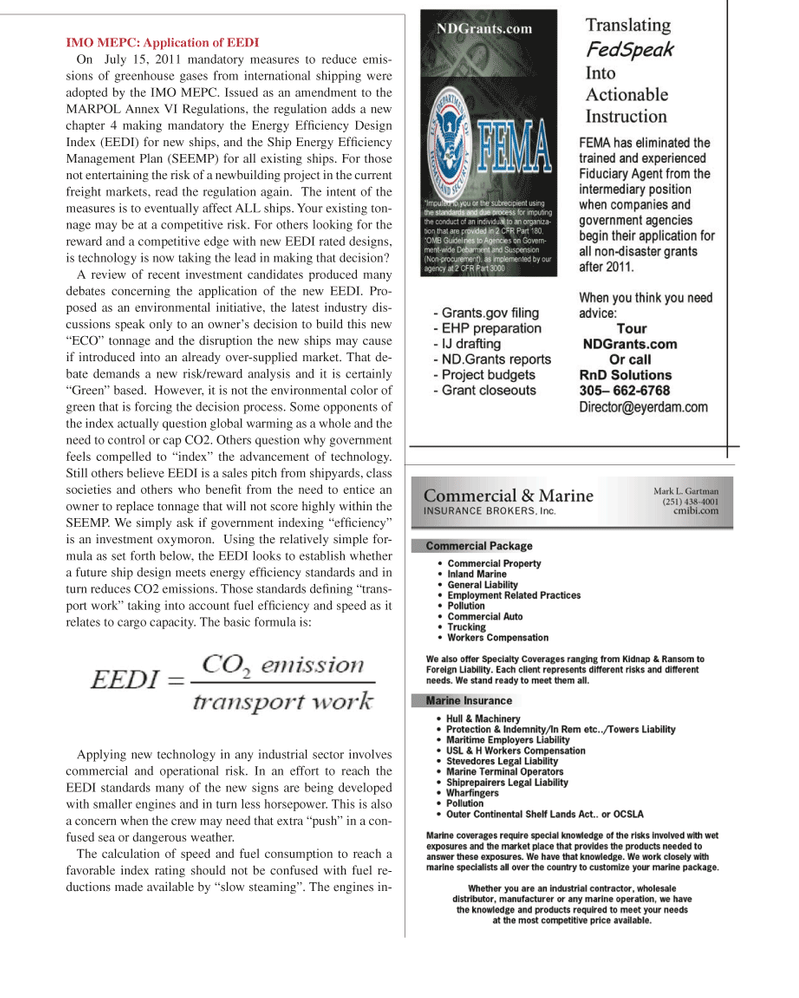
Page 29: of Maritime Logistics Professional Magazine (Q2 2012)
Maritime Risk
Read this page in Pdf, Flash or Html5 edition of Q2 2012 Maritime Logistics Professional Magazine
IMO MEPC: Application of EEDI
On July 15, 2011 mandatory measures to reduce emis- sions of greenhouse gases from international shipping were adopted by the IMO MEPC. Issued as an amendment to the
MARPOL Annex VI Regulations, the regulation adds a new chapter 4 making mandatory the Energy Effi ciency Design
Index (EEDI) for new ships, and the Ship Energy Effi ciency
Management Plan (SEEMP) for all existing ships. For those not entertaining the risk of a newbuilding project in the current freight markets, read the regulation again. The intent of the measures is to eventually affect ALL ships. Your existing ton- nage may be at a competitive risk. For others looking for the reward and a competitive edge with new EEDI rated designs, is technology is now taking the lead in making that decision?
A review of recent investment candidates produced many debates concerning the application of the new EEDI. Pro- posed as an environmental initiative, the latest industry dis- cussions speak only to an owner’s decision to build this new “ECO” tonnage and the disruption the new ships may cause if introduced into an already over-supplied market. That de- bate demands a new risk/reward analysis and it is certainly “Green” based. However, it is not the environmental color of green that is forcing the decision process. Some opponents of the index actually question global warming as a whole and the need to control or cap CO2. Others question why government feels compelled to “index” the advancement of technology.
Still others believe EEDI is a sales pitch from shipyards, class societies and others who benefi t from the need to entice an owner to replace tonnage that will not score highly within the
SEEMP. We simply ask if government indexing “effi ciency” is an investment oxymoron. Using the relatively simple for- mula as set forth below, the EEDI looks to establish whether a future ship design meets energy effi ciency standards and in turn reduces CO2 emissions. Those standards defi ning “trans- port work” taking into account fuel effi ciency and speed as it relates to cargo capacity. The basic formula is:
Applying new technology in any industrial sector involves commercial and operational risk. In an effort to reach the
EEDI standards many of the new signs are being developed with smaller engines and in turn less horsepower. This is also a concern when the crew may need that extra “push” in a con- fused sea or dangerous weather.
The calculation of speed and fuel consumption to reach a favorable index rating should not be confused with fuel re- ductions made available by “slow steaming”. The engines in-
MP #2 18-33 NEW STYLES.indd 29 5/8/2012 12:05:04 PM

 28
28

 30
30
